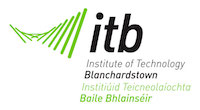Ecology and Biodiversity
Nature was about how the campus has developed over the years and if we don't explore it we won't know what we are missing out on. Recoginsing the heritage caulr of the tree, bridges and plants and knowing the history of it wil; raise an awareness of biodiversity. The role of the grasslands as part of the green infrastucture will let you know that it is important why we doesn't kill it off. It help to show how some habitats are effected by climate change and how the habitat fuctions. Horticulture tells us about the area, histroy of what the place looked like and why it was chosen. Also tells us why it must be protected.
The Wet Greenlands, where we go up the stairs to the Linc building. If you go up the stairs and turn right, keeping going down that path all the grassland there is cover with wildlife. There are animals, insects and birds living in them areas. That area stores carbon and improves soil structure. The scrublands will slowly take over the ground where the wildlife animals are living.
Relic Hedges and treelines in ITB are over hundred years old. They are about 1200ha of 'linear woodlands'. The increase of the woodland coverage in Fingal to 7650ha by 2030. The Hay Meadow, lost habitats happened due to farm ecology and it created the landscape. Certain insects attract to the flower. Over 40 yeats ago, farming has intesified to meet production demands. Most wildflowers rich meadows has been lost. Mushrooms can be found outside of A Block. The rich soil allows mushroom to grow.
The most common tree on campus has to be Ash tree. Every year, ITB Staff grow another year. Dead wood habitats host insects which in turn reduces in the wood. Lichens are important to the enviroment. The wetlands in ITB area supports different range of species and plants. Wetland is important and it connects to the river and the steams. ITB pond has rich nutrients, sediment soil and rich in aquatic life.
